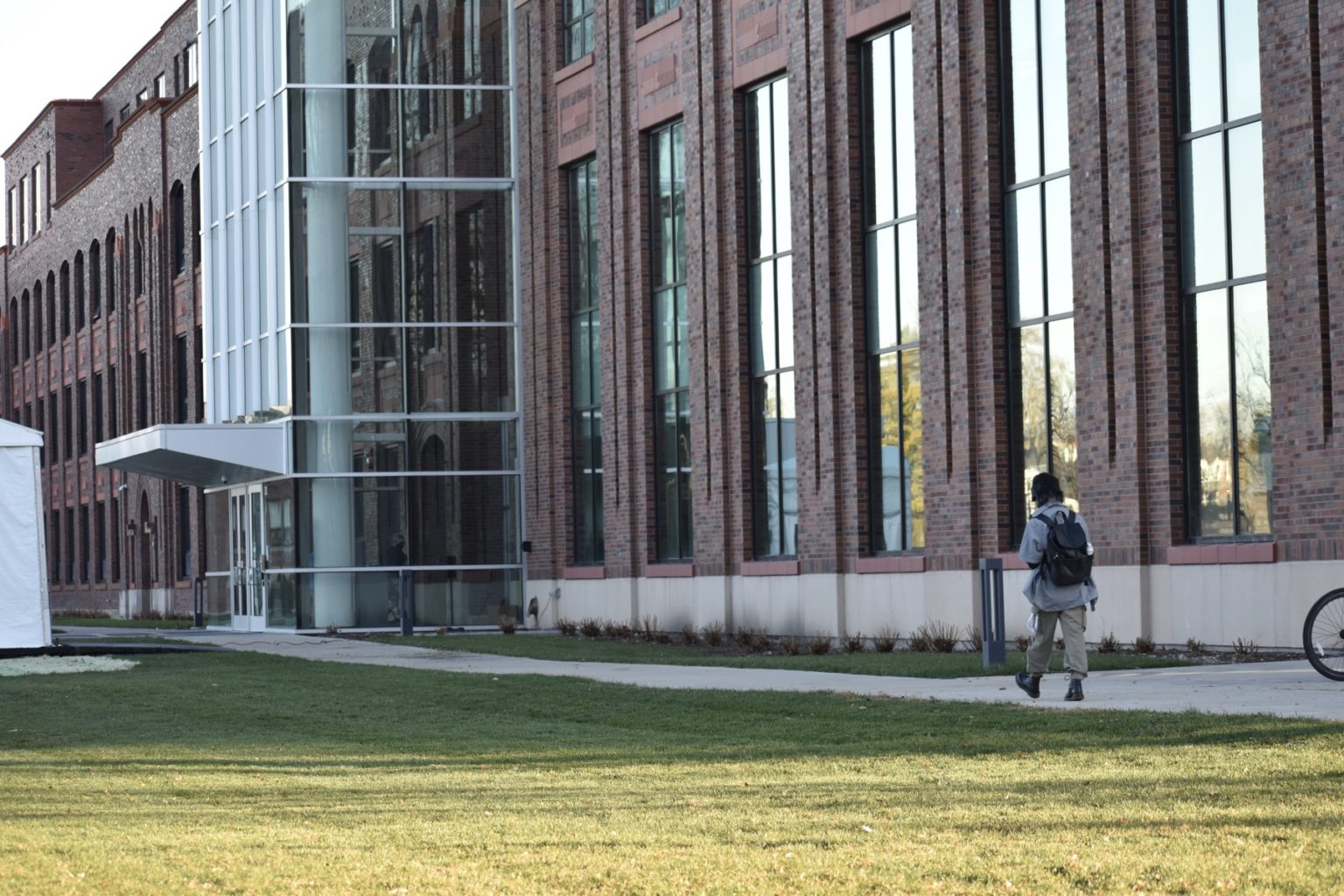
Diversity and inclusion efforts broken down for New Trier School Board
Relatively, New Trier High School is not diverse, with White students making up 78 percent of its student population. So how is it making its diverse student population feel welcome on campus?
District 203 School Board members learned of some of the inclusion efforts on Monday, Oct. 18, at their regular board meeting, which featured presentations from administrators, teachers and students on how the school community promotes a culture of belonging.
Chimille Tillery, director of curriculum and instruction, said in a memo to the board that New Trier is committed to offering monthly programs that “recognize, honor and provide educational opportunities around different identities reflected among our students and staff.”
In the memo, Tillery wrote that there are two primary goals of the monthly programs.
“First, we want to help students of all identities feel like they belong at New Trier and feel that those with that same identity have a voice at New Trier,” she said. “Second, we want to make sure that all students have experiences at school that will help them understand the perspective and identities of others in order to help them navigate colleges, careers, and communities that may look different than New Trier.”
Educational toolkits were provided by students and staff and sent to all teachers so that they may adjust curriculum to reflect the school’s goal of cultivating a culture of belonging.
Dance division coordinator and dance teacher Katie Kritek said she and her colleagues have used those toolkits to create “exciting lessons” that tie into the curriculum.
For Hispanic/Latinx Heritage Month, which was in September, Kritek said students learned about salsa dancing and its cultural importance. This month, she said students will be learning how dance relates to the LGBTQ community to celebrate LGBTQ History Month.
This is accomplished through guest artists, who Kritek said come to class and teach “authentic dances” to the dance students.
She added that dance can help connect people.
“We feel strongly that our dance curriculum is connecting students through human connection, human contact, music and developing an appreciation for different cultures,” Kritek said.
English teacher Tim Hayes, who is also one of the school’s equity liaisons, said November will be Native American Heritage Month, and then there will be debrief time throughout December and January.
“Our plan is to survey our staff and really gather feedback from them,” Hayes said, adding that they will be finding out what worked and what should be added to the toolkits.
Pat Savage-Williams, equity liaison and special education department coordinator, said she is pleased with the positive feedback she’s received so far from both students and staff.
This is huge, this is big. I just think that this will continue to grow and really impact the culture of our school.” Pat Savage-Williams, New Trier’s equity liaison on the school’s inclusion initiatives
She added that resources will continue to be available even after a dedicated month has ended.
“There’s no reason for us to take it away,” she said.
Savage-Williams also said that she sees the programming becoming a part of New Trier’s future.
“This is huge, this is big,” she said. “I just think that this will continue to grow and really impact the culture of our school.”
Board members also heard a presentation on Multi-Tiered Systems of Support, a framework New Trier uses to help students who may struggle to find success and the resources they need to be successful.
The program was the second in a series that district staff has developed for the board of education with a goal of detailing the school’s strategies to address diversity, equity and inclusion. In September, social studies educators explained how they promote critical thinking while teaching emotional historical themes, such as systemic racism.
Joanne Panopoulos, assistant superintendent for special education, said MTSS used to be known as Response to Intervention, and there was a misconception that it was only for students in special education. That, in part, led to the decision to rename it and put more emphasis on the whole student, since she said MTSS is for all students.
Panopoulos and her colleagues explained how MTSS operates, using a graphic of an umbrella to represent the program, with students being represented by the umbrella handle and the available support systems — including the adviser system, academic assistance centers, health services and student support, among others — underneath the umbrella.
The tiers of support were also explained, with Tier 1 being general student support, and Tiers 2 and 3 being more individualized support, which includes one-on-one social worker sessions and strategic study sessions to improve academic and social/emotional challenges.
In other board action, board members approved the results of the district’s annual audit, which found no issues with the school’s finances.
Board members received an update on the pending overhaul of the Winnetka campus’s east side, which primarily includes the demolition of the Gates Gym. Associate Superintendent Chris Johnson said a more detailed timeline should be ready at the November board meeting.
Related to the project, the board approved the issuance of $10.5 million in bonds to help fund the work. Johnson said this is the second of three bond votes the board will need to approve for the project.
And in a 6-1 vote, with board member Brad McLane in dissent, the board approved a bond refunding for the Winnetka Campus west side project, completed in 2017.
Johnson said the district’s financial advisor recommends the district wait until the bonds are callable to maximize the potential savings, which are now estimated at $5.8 million. The district will monitor the savings on a monthly basis and a potential law change with finances.
He added, in his memo, that the bonds “can either be refunded on a taxable basis immediately for a projected total savings of $3,445,004 or in September 2022 for a projected savings of $5,844,350.”
“Based on the overall uncertainty of the market, the Finance Committee developed a consensus to be in a ready position to issue the bonds immediately if there is an increase in market volatility and to continue to monitor the situation on a regular basis,” Johnson wrote in his memo to the board.
The Record is a nonprofit, nonpartisan community newsroom that relies on reader support to fuel its independent local journalism.
Subscribe to The Record to fund responsible news coverage for your community.
Already a subscriber? You can make a tax-deductible donation at any time.

Peter Kaspari
Peter Kaspari is a blogger and a freelance reporter. A 10-year veteran of journalism, he has written for newspapers in both Iowa and Illinois, including spending multiple years covering crime and courts. Most recently, he served as the editor for The Lake Forest Leader. Peter is also a longtime resident of Wilmette and New Trier High School alumnus.


